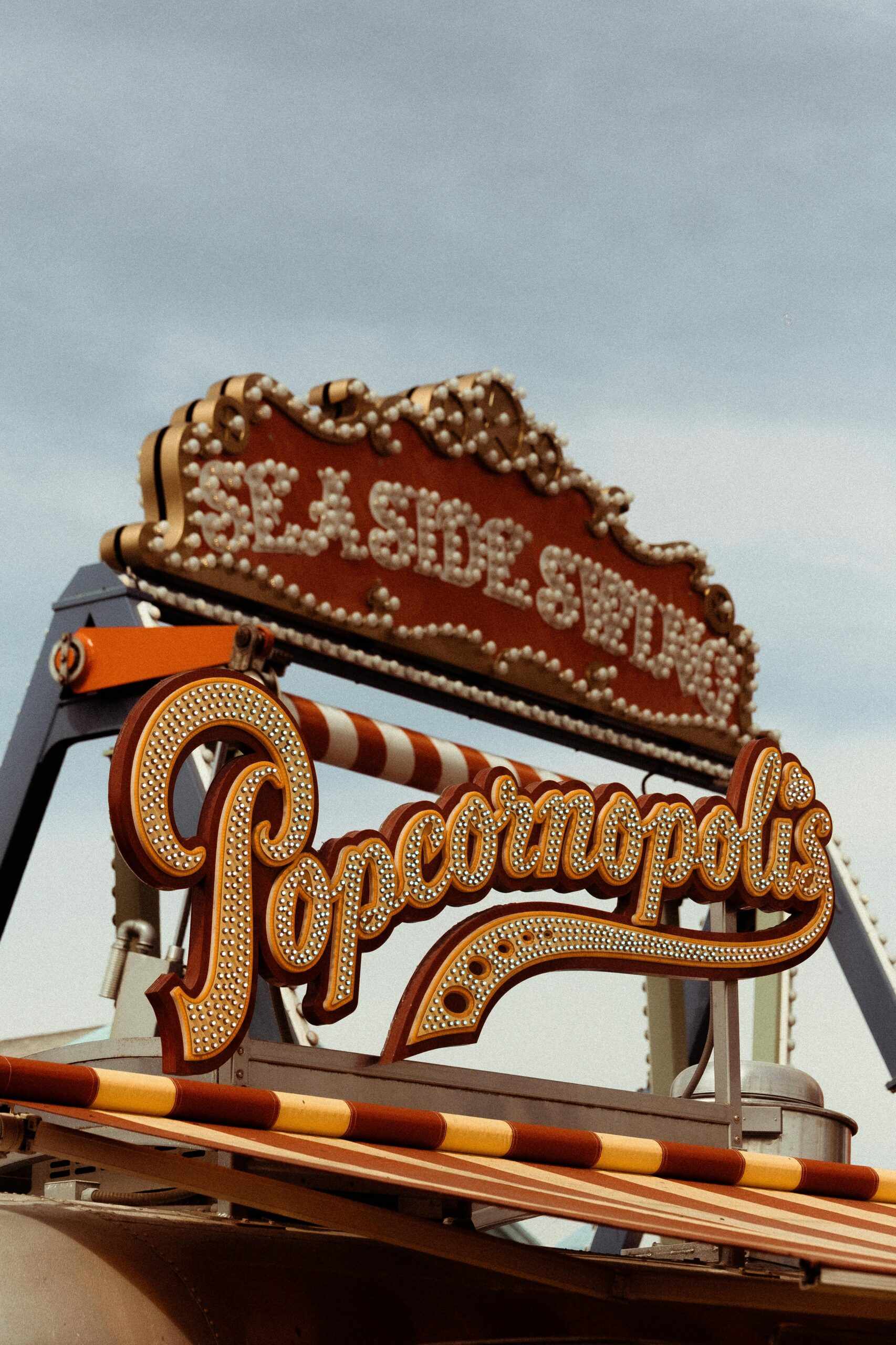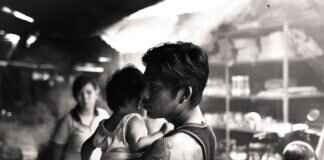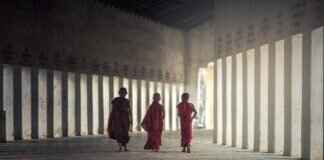The Festival of Lights is a mesmerizing celebration that captivates hearts and minds around the world. Every year, millions of people come together to witness this spectacular event, illuminating the night sky with vibrant colors and dazzling displays. But what makes the Festival of Lights so enchanting? From breathtaking fireworks to intricate lantern displays, the festival offers a unique experience that delights the senses. It’s not just about the lights; it’s about the stories, traditions, and cultures that intertwine during this magical time. Are you curious how different regions celebrate this iconic event? Or maybe you want to know the best places to experience the Festival of Lights firsthand? This blog post will take you on a journey through the rich history and modern festivities that make this event a must-see. Whether you’re a seasoned festival-goer or a first-timer, there’s something for everyone to enjoy. Join us as we explore the wonders of the Festival of Lights, uncovering hidden gems and sharing tips to make the most out of your experience. Don’t miss out on the chance to be part of this unforgettable celebration!
Unveiling the Spectacular Significance of the Festival of Lights: Why It Captivates Hearts Worldwide
The Festival of Lights, known as Diwali, is celebrated by millions around the world. It symbolizes the victory of light over darkness, good over evil, and knowledge over ignorance. The festival is not just about lights, it involve a myriad of traditions, rituals, and celebrations that vary across regions and cultures.
Historical Background
Diwali’s origins trace back to ancient India, with roots in Hindu mythology. One of the most popular legends associate with this festival is the return of Lord Rama to his kingdom of Ayodhya after defeating the demon king Ravana. The people of Ayodhya, in their joy, lighted rows of lamps to welcome him back. Its been celebrated for thousands of years, with varying significances across different communities:
- Hinduism: Celebrates the return of Lord Rama.
- Jainism: Marks the spiritual awakening of Lord Mahavira.
- Sikhism: Commemorates the release of Guru Hargobind Ji from imprisonment.
- Buddhism: Observed by some sects as a day of reflection and renewal.
The festival typically falls between October and November, depending on the lunar calendar. Its a time for families to come together, reflect on their lives, and share their affections.
Significance of Light
Light holds a special place in Diwali celebrations. The lighting of diyas (oil lamps), candles, and fireworks represents the dispelling of darkness and ignorance. The word “Diwali” itself derives from the Sanskrit term “Deepavali,” which means “row of lights.”
Throughout the festival, various rituals takes place:
- Cleaning and Decorating: Homes are cleaned and adorned with rangoli (decorative patterns made from colored powders or flower petals).
- Puja: A worship ceremony is held to honor Lakshmi, the goddess of wealth and prosperity.
- Feasting: Families prepare sweets and delicacies, sharing them with friends and neighbours.
Celebratory Practices
Different regions celebrate Diwali in distinct ways, but certain elements are universally recognized. Here are some of the popular practices:
- Fireworks: Lighting firecrackers is a common tradition, although it has faced criticism for environmental concerns.
- Gifts and Sweets: Exchanging gifts and sweets signifies goodwill and friendship.
- Cultural Performances: Various cultural events, including dance and music, are organized, showcasing the rich heritage of the community.
Regional Variations
Diwali is celebrated in multiple countries, each with its unique flair. Here are some examples of how it differ across regions:
- India: In India, the festival is celebrated with great fervor, including elaborate decorations and public celebrations.
- Nepal: Known as Tihar, it includes worship of animals and the honoring of siblings.
- Indonesia: In Bali, it is celebrated as the Day of Silence, a time for reflection and meditation.
- Malaysia: Diwali is observed as a public holiday, with lights and decorations adorning the streets.
Environmental Considerations
In recent years, there has been increasing awareness about the environmental impacts of Diwali celebrations. The use of firecrackers has been linked to air pollution, prompting many to seek sustainable alternatives. Some initiatives includes:
- Promoting eco-friendly fireworks.
- Encouraging the use of LED lights instead of traditional diyas.
- Organizing community events that focus on nature conservation.
Practical Insights for Celebrating Diwali
To fully embrace the spirit of Diwali, consider these practical tips:
- Plan Ahead: Start preparations early to alleviate last-minute stress.
- Sustainable Choices: Opt for eco-friendly decorations and gifts.
- Community Involvement: Engage with local communities for larger celebrations.
- Education: Teach children about the significance of the festival and its values.
Conclusion
Diwali represents more than just a festival; its a celebration of life, unity, and hope. As the Festival of Lights approaches, its important to remember the essence of this joyous occasion. Embracing traditions while adapting to modern challenges ensures that Diwali continues to be a vibrant and meaningful celebration for generations to come.
10 Must-Try Traditional Treats That Illuminate Your Festival of Lights Celebrations
The Festival of Lights, commonly refered to as Diwali, is one of the most celebrated festivals in the world. It represents the triumph of light over darkness and good over evil. Every year, millions of people participate in various festivities that includes lighting oil lamps, decorating homes, feasting on sweets, and engaging in prayers. This article explores the historical significance, cultural practices, and the various ways Diwali is celebrated across the globe.
Historical Background
Diwali has its origins rooted in ancient Indian traditions. The festival is linked to several historical events and myths. In Hindu culture, it commemorates Lord Rama’s return to Ayodhya after defeating the demon king Ravana. According to the epic Ramayana, the people of Ayodhya illuminated their city with oil lamps to welcome their king home. Another significant story associated with Diwali is the victory of Goddess Durga over the buffalo demon Mahishasura, symbolizing the victory of good over evil.
- Diwali is celebrated over five days, each day having its own significance:
- Dhanteras: The first day, dedicated to wealth and prosperity.
- Naraka Chaturdashi (Choti Diwali): Celebrates Lord Krishna’s victory over the demon Narakasura.
- Diwali: The main day, marking the return of Lord Rama.
- Govardhan Puja: Commemorates Lord Krishna’s lifting of the Govardhan Hill.
- Bhai Dooj: A day to honor the bond between brothers and sisters.
Celebrations Around the World
Diwali is not limited to India alone; it is celebrated by Hindu communities worldwide. Each culture adds its unique twist to the festivities.
- In India, cities like Varanasi and Jaipur become vibrant with lights and fireworks.
- In Nepal, the festival is known as Tihar, where crows and dogs are worshipped.
- In Trinidad and Tobago, Diwali is a public holiday, celebrated with parades and cultural events.
Examples of how Diwali is celebrated globally includes:
- Lighting diyas: In every household, small oil lamps are lit to ward off negativity.
- Rangoli designs: Colorful patterns made on the ground to welcome guests.
- Fireworks: A spectacle to symbolize joy and celebration.
Significance of Light
The concept of light in Diwali is not just about physical illumination, but it represents knowledge, wisdom and purity. The festival encourages people to discard ignorance and embrace learning.
- Lighting lamps is a ritual that signifies the removal of darkness and the arrival of knowledge.
- The illumination of homes symbolizes the inner light that guides individuals through life’s challenges.
Traditional Foods and Sweets
Food plays a central role in any festival and Diwali is no different. Traditional sweets and snacks are prepared and shared among family and friends.
-
Sweets:
- Gulab Jamun: Deep-fried dough balls soaked in syrup.
- Jalebi: Spiral-shaped fried batter soaked in sugar syrup.
- Barfi: A dense sweet made from milk and sugar.
-
Savory snacks:
- Samosas: Fried or baked pastry filled with spiced potatoes.
- Pakoras: Deep-fried fritters made with vegetables and chickpea flour.
Celebrating with food brings families together and strengthens community ties.
Environmental Concerns
In recent years, Diwali celebrations have come under scrutiny due to environmental concerns. The use of fireworks contributes to air pollution and noise, which poses a risk to health and wildlife. Many cities have started initiatives encouraging eco-friendly celebrations.
- Some alternatives for a greener Diwali includes:
- Use of eco-friendly crackers: Less harmful to the environment.
- Planting trees: A positive contribution towards nature.
- Using LED lights: Energy-efficient and long-lasting.
These changes help ensure that the beautiful festival continues to be enjoyed by future generations without harming the planet.
Conclusion
Diwali is a festival rich in history, culture, and traditions. Its essence lies in the celebration of light, love, and togetherness. As society evolves, so does the celebration of this magnificent festival, adapting to modern values while preserving its core significance. Embracing both tradition and innovation, Diwali continues to delight people of all ages, making it a truly global celebration of joy and hope.
How Different Cultures Celebrate the Festival of Lights: A Global Journey of Joy and Tradition
The Festival of Lights, also know as Diwali, is one of the most celebrated festivals across the globe, particularly within Hindu culture. This festival symbolizes the victory of light over darkness, good over evil, and knowledge over ignorance. The name “Diwali” is derived from the Sanskrit word “Deepavali,” which means “row of lights.” It is celebrated with great enthusiasm, and it is essential to understand the significance, history, and various customs associated with this vibrant festival.
Historical Background
Diwali has deep historical and mythological roots. The festival is believed to have originated in ancient India, dating back over 2,500 years. It is primarily linked to various religious and cultural narratives.
- In Hindu tradition, Diwali celebrates the return of Lord Rama to Ayodhya after defeating the demon king Ravana, a tale told in the epic Ramayana.
- In Jainism, it marks the attainment of Nirvana by Lord Mahavira, the last Tirthankara.
- For Sikhs, it commemorates the release of Guru Hargobind Ji from prison, while also marking the celebration of Bandi Chhor Divas.
- In Buddhism, some communities celebrate the festival to honor Ashoka the Great’s conversion to Buddhism.
The festival is observed during the Hindu lunisolar month of Kartika, which typically falls between mid-October to mid-November.
Significance of Diwali
The significance of Diwali can be understood through various lenses:
- Spiritual: It is a time to reflect on one’s life, seek forgiveness, and resolve to improve oneself.
- Communal: Families and friends come together to celebrate, strengthening bonds and fostering community spirit.
- Economic: It is a peak time for shopping, with many businesses seeing a significant increase in sales during this festive period.
Customs and Traditions
The observance of Diwali includes a variety of traditions that vary among different regions and cultures. Some of the most common customs include:
- Lighting Diyas: Small oil lamps are lit and placed around homes as a symbol of enlightenment and hope.
- Rangoli: Colorful patterns made from rice, flour, or flower petals adorn the entrances of homes, welcoming guests and deities.
- Fireworks: The night sky lights up with colorful firework displays, representing the joy of the festival.
- Puja: Special prayers and rituals are conducted to honor Goddess Lakshmi, the deity of wealth and prosperity.
- Sweets and Treats: Families prepare various traditional sweets and snacks to share with loved ones and guests.
Regional Variations
Diwali is celebrated in many ways across different regions of India and the world. Here are some notable regional variations:
- North India: The festival is often associated with Lord Rama’s return and is celebrated with grand festivities and lighting of diyas.
- South India: Here, it is linked to Lord Krishna’s victory over the demon Narakasura, with celebrations beginning a day earlier.
- West India: In regions like Gujarat, the festival includes the celebration of new year and is marked with the worship of Dhanteras.
- East India: In Bengal, the festival is celebrated more prominently in honor of Goddess Kali, with rituals that are unique to the region.
Diwali Around the World
Diwali is not only celebrated in India but also across the globe, showcasing the cultural diversity of the festival. Some notable places include:
- Nepal: Known as Tihar, it is celebrated with similar customs, honoring animals and deities.
- Mauritius: Diwali is a public holiday there, celebrated with much enthusiasm.
- Trinidad and Tobago: The festival is recognized as a public holiday, where festivities include fireworks and community gatherings.
- United States and Canada: Growing Indian communities celebrate Diwali with cultural programs, fairs, and community events.
Impact of Diwali on Society
The Festival of Lights not only brings joy but also has a substantial impact on society. It encourages:
- Economic Growth: The surge in shopping and spending boosts local economies.
- Cultural Exchange: With its global observance, Diwali promotes understanding and appreciation between different cultures.
- Social Responsibility: Many people engage in charity and community service, reflecting the festival’s spirit of goodwill.
In summary, Diwali, or the Festival of Lights, offers a rich tapestry of historical, cultural, and spiritual significance. Its vibrant traditions and customs celebrate the triumph of light over darkness and foster a sense of community and belonging. As the festival continues to evolve and adapt across the globe, its core messages of hope, renewal, and unity
7 Enchanting Rituals of the Festival of Lights: Discover Their Meaning and Magic
The Festival of Lights: A Celebration of Culture and Community
The Festival of Lights, often known as Diwali in India and by many other names around the globe, is a vibrant and important celebration that symbolizes the triumph of light over darkness. This festival is celebrated by millions of people across diverse cultures and religions, including Hinduism, Buddhism, Jainism, and Sikhism. Its significance goes beyond just religious observance; it also represents the coming together of families and communities, making it a time of joy and togetherness.
Historical Background and Significance
Diwali has ancient roots, with its origins tracing back to several historical events and mythological tales. One of the most widely accepted stories is the return of Lord Rama to Ayodhya after defeating the demon king Ravana. People lit oil lamps to guide him home, marking the beginning of the festival. Other stories associated with Diwali include the worship of Goddess Lakshmi, the goddess of wealth and prosperity, and the celebration of Lord Krishna’s victory over the demon Narakasura.
Key Facts About the Festival of Lights:
- Diwali is celebrated over five days in most regions, each day holds its own significance.
- The festival usually falls between October and November, depending on the lunar calendar.
- Different regions in India celebrate Diwali with various customs and rituals.
- Lighting diyas (oil lamps) and bursting firecrackers are common practices during the festival.
- The festival is known by several names, including Deepavali and Tihar.
Traditions and Customs
The customs and rituals of the Festival of Lights varies widely, reflecting the rich tapestry of cultures that participate. Each community adds its own flavor to the celebrations, creating a unique blend of traditions.
-
Day 1: Dhanteras – This day marks the beginning of Diwali, where people clean their homes and purchase new items, especially metal, as it is considered auspicious.
-
Day 2: Naraka Chaturdashi (Choti Diwali) – This day commemorates the defeat of Narakasura by Lord Krishna, and people often wake up early to take ritual baths.
-
Day 3: Diwali (Main Day) – The highlight of the festival, families perform puja (prayer) to Goddess Lakshmi and light diyas to welcome prosperity.
-
Day 4: Govardhan Puja – This day celebrates Lord Krishna’s lifting of the Govardhan hill to protect villagers from rain and floods.
-
Day 5: Bhai Dooj – The festival concludes with the celebration of the bond between brothers and sisters, where sisters pray for their brothers’ well-being.
Celebrations Around the World
The Festival of Lights is not limited to India; it is celebrated by communities worldwide. Here are some notable celebrations:
-
In Nepal: Known as Tihar, the festival includes worshipping animals like crows, dogs, and cows, recognizing their roles in human life.
-
In Trinidad and Tobago: The festival is celebrated with vibrant parades, cultural performances, and the lighting of thousands of lamps.
-
In Singapore: The Little India district comes alive with decorations, street fairs, and cultural performances, showcasing the multicultural fabric of the nation.
-
In the United States: Many Indian communities host Diwali fairs that include food stalls, cultural dances, and fireworks, promoting awareness and inclusivity.
The Role of Food in the Festival
Food plays a central part in the Festival of Lights, with families preparing a variety of sweets and savory dishes. Here are some popular treats enjoyed during Diwali:
-
Sweets: Traditional sweets such as ladoos, barfis, and jalebis are made and shared among friends and family.
-
Savory Snacks: Items like samosas and pakoras are also popular, often served during festive gatherings.
-
Feasting: Families come together to enjoy elaborate meals, showcasing the richness of regional cuisines.
Cultural Comparisons: Diwali vs. Other Festivals of Light
While Diwali is a prominent festival of light, there are others around the world that share similar themes of illumination and celebration. Here are some examples:
| Festival | Region | Main Themes |
|---|---|---|
| Hanukkah | Jewish culture | The miracle of the oil and light |
| Lantern Festival | China | The end of the lunar new year |
| Eid al-Fitr | Islamic culture | Celebrating the end of fasting |
Each festival celebrates light in its unique way, reflecting the values and beliefs of the respective cultures.
The Impact of the Festival on Communities
The Festival of Lights fosters a sense of unity and community. It encourages people to come together, share joy, and reinforce bonds with family and friends. Many also use the occasion to give back to society through charitable acts, further enhancing community spirit.
In summary, the
The Ultimate Guide to Planning Your Own Festival of Lights Celebration: Tips, Tricks, and Must-Haves
The Festival of Lights has captured the heart of many cultures around the world. Known for its stunning displays of light and vibrant festivities, the festival symbolizes the triumph of light over darkness. It is celebrated across various regions, each with unique traditions and meanings. The festival has its roots in ancient history, and its significance has evolved over time.
Historical Background
The origins of the Festival of Lights can be traced back to several ancient civilizations. One of the earliest references to a festival involving light is found in ancient Hindu scriptures. The festival of Diwali, which originated in India, is one of the most well-known celebrations of light, emerging as a way to honor the victory of Lord Rama over the demon king Ravana.
Besides Hinduism, other religions and cultures also have their own versions of light festivals. For example, in Judaism, Hanukkah is celebrated to commemorate the rededication of the Second Temple in Jerusalem, where the miracle of the oil occurred. In Christianity, Christmas is associated with the celebration of the birth of Jesus, where lights symbolize hope and joy.
Celebrations Around the World
Many cultures have their own take on the Festival of Lights. Below are some notable examples:
-
Diwali: Celebrated primarily by Hindus, this festival lasts for five days. Homes are decorated with oil lamps, and fireworks fill the sky. It signifies the victory of light over darkness and good over evil.
-
Hanukkah: Also know as the Festival of Lights, it is observed by Jews for eight nights. Candles are lit on a menorah, commemorating the miracle of the oil that lasted eight days.
-
Christmas: Christian communities celebrate the birth of Jesus Christ with lights adorning trees and homes. It represents the light of Christ coming into the world.
-
Loi Krathong: This Thai festival involves floating baskets decorated with flowers and candles on rivers, symbolizing the release of negativity and welcoming good fortune.
Significance of Light in Festivals
Light plays a crucial role in these festivals. It represents various themes such as:
-
Hope and Renewal: Lights often symbolize new beginnings and the hope for brighter days ahead.
-
Spiritual Awakening: Many believe that light can guide the soul towards enlightenment and understanding.
-
Community and Togetherness: Festivals often encourage people to come together, fostering a sense of belonging and unity among participants.
Common Practices During the Festival of Lights
During the Festival of Lights, several common practices are observed across different cultures. These include:
-
Lighting Candles or Lamps: Central to many celebrations, this act symbolizes the dispelling of darkness and ignorance.
-
Fireworks Displays: Fireworks are often part of the festivities, representing joy and celebration.
-
Festive Meals: Special dishes and sweets are prepared and shared among family and friends, enhancing the communal spirit.
-
Cultural Performances: Music, dance, and theater performances are often organized to entertain and educate people about the festival’s significance.
-
Gift Exchanges: Giving and receiving gifts is a common practice, symbolizing love and goodwill.
Comparisons Between Different Festivals
While the Festival of Lights varies from culture to culture, there are similarities that can be noted:
| Aspect | Diwali | Hanukkah | Christmas | Loi Krathong |
|---|---|---|---|---|
| Duration | 5 days | 8 nights | 1 day (varies) | 1 night |
| Lighting | Oil lamps and fireworks | Menorah candles | Christmas lights | Floating candles |
| Main Theme | Victory of light over darkness | Miracle of oil | Birth of Jesus | Release of negativity |
| Community Focus | Family and friends | Family gatherings | Community celebrations | Local traditions |
Embracing Imperfection in Celebrations
Festivals are about embracing the imperfections of life. Each festival has its unique quirks, mistakes, and spontaneous moments that make them more relatable and enjoyable. Whether it be a burnt sweet dish during Diwali or an off-key carol sung at Christmas, these moments create cherished memories that define the experience.
The Festival of Lights continues to delight people of all ages, serving as a reminder of the power of light in our lives. Its significance transcends borders and cultures, uniting individuals in a shared celebration of hope, joy, and community. As each year passes, new traditions may emerge, but the essence of light as a symbol will remain timeless.
Conclusion
In conclusion, the Festival of Lights is a vibrant celebration that illuminates not only our homes but also our hearts, bringing together communities in a tapestry of joy, culture, and tradition. We explored the rich history behind this enchanting festival, the diverse ways it is celebrated across various cultures, and the profound significance of light as a symbol of hope and renewal. From stunning fireworks displays to intricate lanterns and delectable festive treats, the Festival of Lights offers something for everyone. As you prepare to partake in this year’s festivities, consider embracing the spirit of togetherness by sharing the joy with friends and family, or even volunteering in your community. Remember, the true essence of this celebration lies not only in the dazzling lights but also in the bonds we create and the love we share. Let your light shine bright, and make this Festival of Lights a memorable one!














